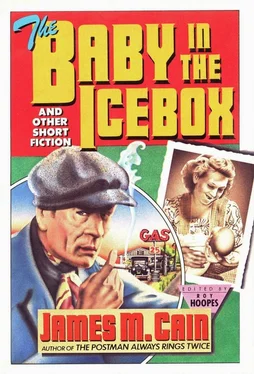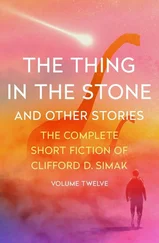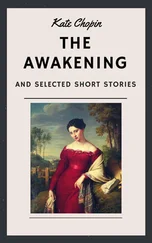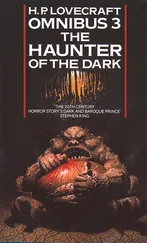Roxy’s testimony was carried in full in the New York Times, and Cain assumed it reached Paris, where he was certain Hemingway had absorbed it. He became convinced that his theory was correct when he finally read “Fifty Grand” and noted the similarity in its plot, especially in an incident described by Roxy Stimson, prior to Jess Smith’s suicide. As for Roxy’s influence on Cain’s style: “She taught me respect for the cliche. I’d say she influenced me plenty,” he said.
The good response to “Pastorale” encouraged Cain to write another short story, this one based on an experience in France on the night of September 26, 1918, during the opening of the Meuse-Argonne offensive. Again, Cain elected to tell the story in the first-person narration of an Eastern Shore rube, although the incident actually happened to him and he could just as easily have told it in his own near-perfect diction. “The Taking of Montfaucon” also appeared in the Mercury and was reprinted in 1929 and 1942 in the Infantry Journal, which said, “[It] has never been excelled as an accurate description of conditions in the war and few stories of any aspect of the war will stand beside it.”
After “Montfaucon,” Cain worked exclusively on dialogues to round out his book Our Government, then moved to California, where, for the first year or so, he tried to establish himself as a screenwriter. When Paramount let him go — after six months of unsuccessful scriptwriting efforts — he decided to resume his fiction. His first story ideas grew out of the automobile trips around Southern California he and his wife, Elina, used to take, sometimes with the two kids. One place they liked to stop was the Goebels Lion Farm on the road to Ventura. Cain had a lifelong fascination with cats — especially big ones. His feelings for them bordered on fanaticism: “I find it impossible,” he said, “to believe in a life after death, and if you don’t accept that, the Christian theology goes up in smoke... To me, God is life, and if no immortal soul figures in, then all must be included in the concept. So animals to me take on a mystic meaning, more perhaps than they do to most people.” Cain wrote editorials and several short stories about tigers; he wrote Hearst columns about panthers; and late in life he wrote an unpublished novel about a little girl who is given a tiger cub, which she raises as a pet.
Out at Goebels, Cain conceived an idea for a story about a couple who run a gas station and lunchroom on the road to Ventura. Their trouble starts when the husband, Duke, decides to add some big cats to interest the children and draw more customers. Cain called his story “The Baby in the Icebox,” and although he also wrote it in his first-person, Ring Lardner style, he found that when he moved from the Eastern Shore and put his story in the mouth of a western roughneck, a type he was beginning to observe in California, he was writing in a comfortable, natural style that had distinctive flavor and pace. The famous James M. Cain momentum began to emerge.
“The Baby in the Icebox” is a tribute to Cain’s ability to tell an improbable tale believably — and to make it eminently readable. It was also an important link in the chain that eventually led to Cain’s phenomenal career as a novelist. When Mencken showed Knopf the galleys of “The Baby in the Icebox,” the publisher wrote Cain that the story “is a whopper — one of the best I have read, and it encourages me to believe that one of these days you may try your hand at a novel.”
Cain replied that he still did not think he could write long fiction, but added that Knopf’s note might be just the encouragement he needed. Then he outlined an idea for a story which would soon become The Postman Always Rings Twice.
“The Baby in the Icebox” sold immediately to Paramount, but when the movie — She Made Her Bed — based on the story was released in the spring of 1934, it was panned by the critics. This did not affect Cain, who by that time was riding the crest of the wave created by the publication of Postman. Usually, the leads to the movie reviews referred to Cain or “the most famous story by James M. Cain” rather than to the movie itself, and most reviewers relieved Cain of all responsibility for the film’s failure. Said Bosley Crowther in the New York Times: “Though it is fastened upon a story by James M. Cain, the blame for this picture is too large, too richly complicated to be attached to one person.”
With the publication of Postman, James M. Cain was suddenly famous and in demand. His agent, James Geller, quickly sold two of his stories, written at about the time he wrote “The Baby in the Icebox” but rejected by several editors (“Come Back,” about a bit player trying to make a comeback in Hollywood riding a famous horse; and “The Whale, the Cluck and the Diving Venus,” about an Eastern Shore hustler who tries to promote a tourist attraction by putting a whale in a swimming pool). Cain was working at a furious pace — “the fastest two-finger typist I ever saw,” says his stepson, Leo Tyszecki. He started a series of food articles, which drove Edith Haggard, his new agent, nearly frantic. “You have made me an old woman, lad. With the magazine world at your feet, with their hands raised high over their heads pleading for short stories, you want to write food articles.”
He was also writing a three-times-a-week syndicated column for the Hearst papers, working on a play to be based on Postman, beginning a magazine serial to be called Double Indemnity, and taking studio assignments, during one of which he dictated a short story, “Hip, Hip, Hippo,” about a Hollywood bit player who tried to make a comeback riding a hippopotamus in a big movie, not one of Cain’s better efforts.
By this time, Cain had also outlined a novel, eventually to be called Serenade, for Knopf, and the publisher was urging him to finish it and take advantage of all the publicity surrounding the publication of Postman. But Cain was still not satisfied that the basic idea for Serenade was sound, and he settled down to respond to his New York agent’s plea that he write more short stories. But once again, as with his food articles, he flabbergasted Ms. Haggard, this time by writing a third-person story about a girl and a boy and the boy’s fear of diving off high places. He called it “The Birthday Party” and sent it off to New York. An amazed Edith Haggard replied, “It’s a new writer who signs himself James M. Cain!” She had been pleading for more stories — but a children’s birthday party? Most of New York’s magazine editors agreed. “It would be hard to imagine anything more different from The Postman Always Rings Twice,” wrote the assistant editor of This Week in rejecting the story. “Although we are by no means demanding that he spend the rest of his life rewriting Postman, we had hoped for something as swift-moving and full of action.” Ms. Haggard finally sold “The Birthday Party” to the Ladies’ Home Journal for $750.
After that, with Ms. Haggard still pleading for a murder story, he finished Double Indemnity, then started to work on another short story that he expected would be more to the agent’s liking. He recalled how, when he was living in Burbank, he would drive home from one of the studios and be detained night after night by the freight trains at the crossings. As he sat there watching the boxcars go by, he was appalled by the hoboes — “the hundreds of human derelicts silhouetted against the Verdugo Hills, perched like crows on top of the cars, going nowhere and knowing they were going nowhere.” As he thought about these men, his mind — with the usual Cain twist — began to play on an idea: What would happen if one of these hoboes, perhaps unwittingly, became involved in some scrape, such as a murder? Characteristically, Cain was more interested in the hobo’s subjective reaction than in his battle with the law. “When a murderer comes to grips with the law,” Cain thought, “he has a better than even chance to win. But, because of forces inside of him, his crime eventually catches up with him” — again, Cain’s favorite theme.
Читать дальше











